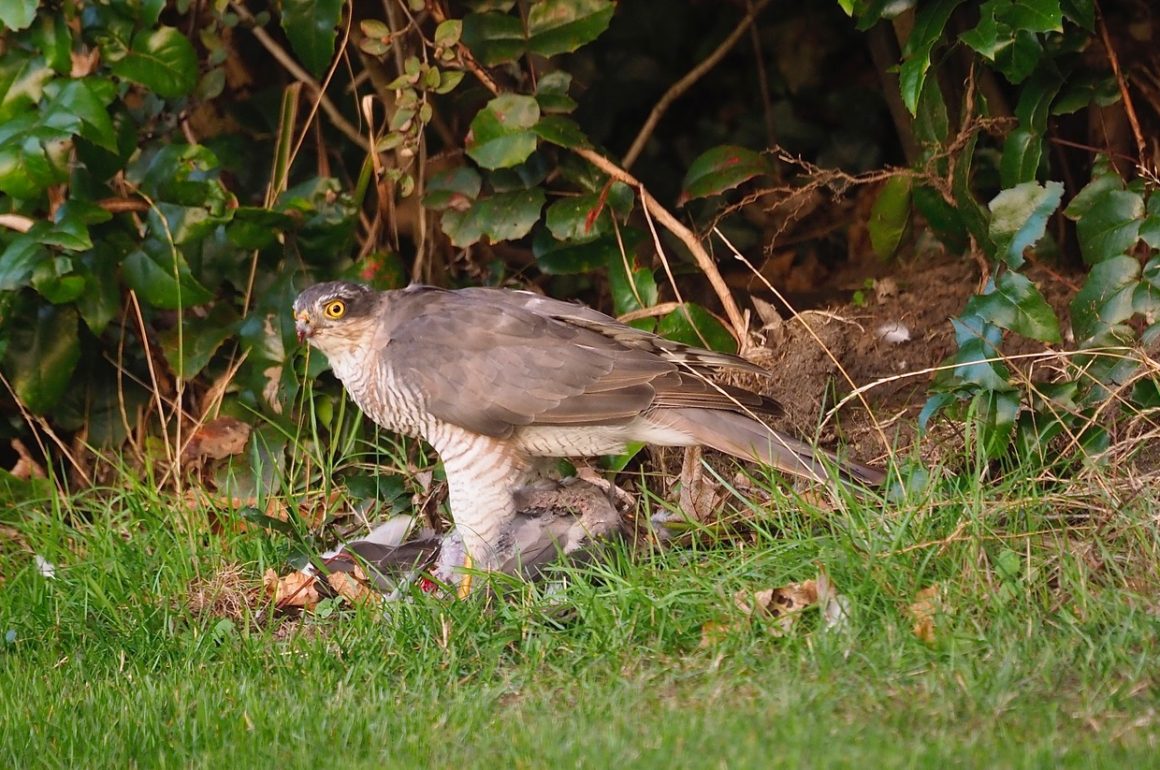
As we all know, birdwatchers love making lists. Here in the UK patch-listing is popular. A patch is usually somewhere not too far from home where you can observe birds regularly on a weekly or even daily basis. However, a strong rival to the patch list is the garden list, or what might be called a back-yard list on the other side of the Atlantic.
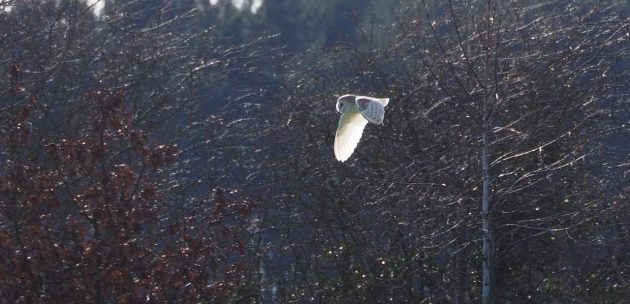
Hunting Barn Owls were a regular sight at my last house. This one was photographed in the paddock on a bright April morning
At my last house I combined the two, as my garden was surrounded by what looked like unpromising farmland but which, over the course of 15 years, produced an impressive 137 species. My rules were simple: birds could be counted if they were seen within a half-mile radius of my house. In front of the house I had a three-acre paddock that I managed for wildlife, and over the years this produced plenty of good birds, plus a few surprises. Hunting Barn Owls were regular, but I also recorded Tawny and Little Owls (both of which bred successfully in the adjacent lime trees along my drive). Barn Owls attempted to breed once, but were ousted by Jackdaws. On a couple of memorable occasions I saw a Long-eared Owl hunting the area.
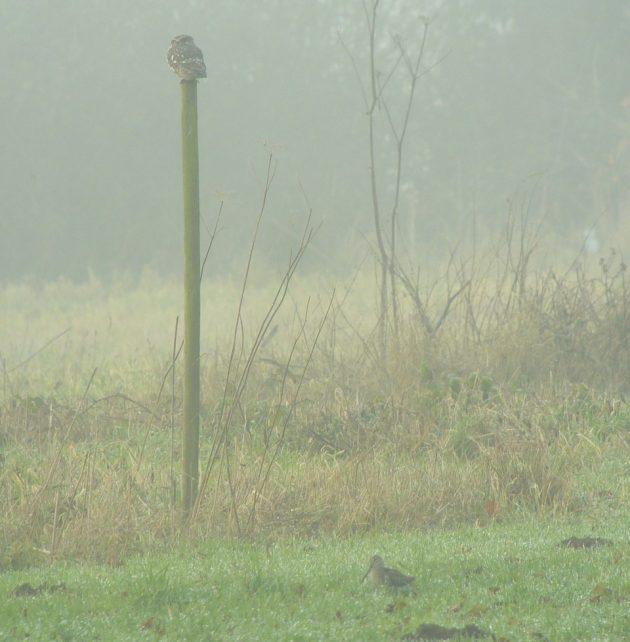
Two good birds in one shot: a Little Owl and a Snipe, digiscoped from my living room window on a late December morning
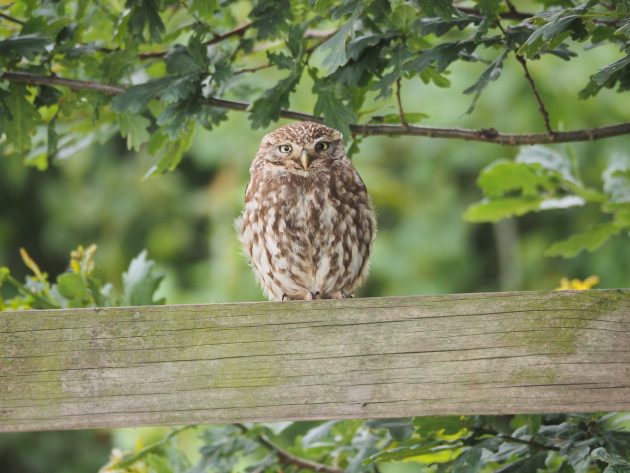
A Little Owl perched on a fence along the drive of my last house
One year the local estate decided to farm outdoor pigs on the large field adjoining my paddock. The ground proved to be unsuitable for the pigs, as it flooded readily. The pigs loved the mud, but the farmer’s tractors didn’t. However, the muddy conditions attracted birds, as did a seasonal pond that drew in a variety of waders and wildfowl. The latter included Mallard, Teal, Wigeon, Gadwall and on one occasion a passing flock of White-fronted Geese. The waders ranged from a Wood Sandpiper (a scarce bird inland in Suffolk) to a Black-tailed Godwit, while Snipe were regular in the winter, joined on one occasion by a Jack Snipe. The latter was my 137th species, and the last new bird added before we moved.
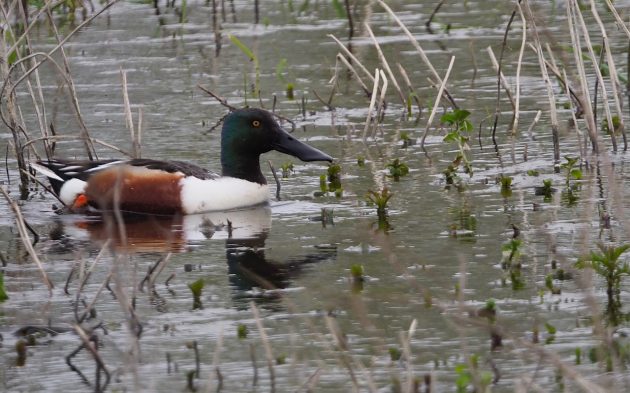
This drake Shoveler was on the flooded pig field
My garden was relatively small, but I fed it heavily, attracting a good variety of birds thought the year. My favourites were the Tree Sparrows. These are rare birds in Suffolk, and my colony was one of only two or three in the whole of the county. It built-up gradually over several years, and was up to a dozen pairs by the time we moved in 2019.
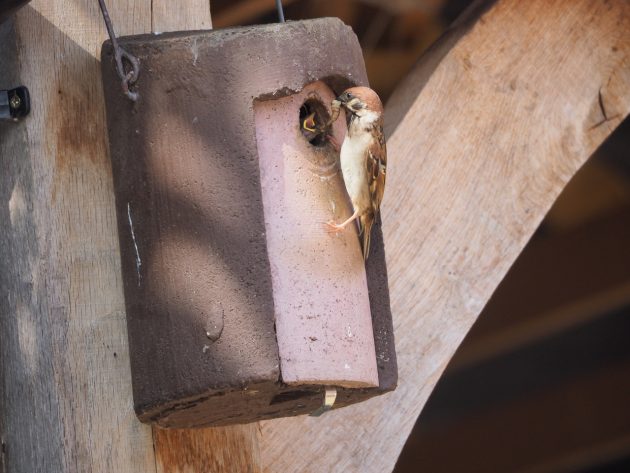
The colony of Tree Sparrows at my last house built up to a dozen pairs. All were in Schwegler nest boxes, as show here
Sadly, though we only moved a mere five miles east as the crow flies, I have yet to see even a single Tree Sparrow in my new garden in the five years since we moved here. Unlike the previous property, which was very rural, my current house is in a village, though the west side of my garden backs on to arable fields. I now have a garden list, not a patch/garden list, and at a mere 73 species it’s rather more modest than my previous one. The garden is quite large, at half an acre, while I have tried hard to make it more attractive to birds by adding a pond, planting a hedge of native trees and a small apple orchard, as well as providing several feeding stations.
You can make up your own rules for garden listing. Mine are simple, as I tick any bird I see or hear from or in the garden. There are a number of fly-over birds that I see daily, but which are never likely to actually land in the garden, but which do use my air space. These include Rooks and Jackdaws, both of which are numerous locally. During the winter there’s a regular late-afternoon flight of hundreds of these crows heading to their roost half a mile away. Ravens are a new flyover addition to the garden list. They are birds that are spreading east, having been exterminated in Suffolk in the 19th century. They now breed a few miles away.
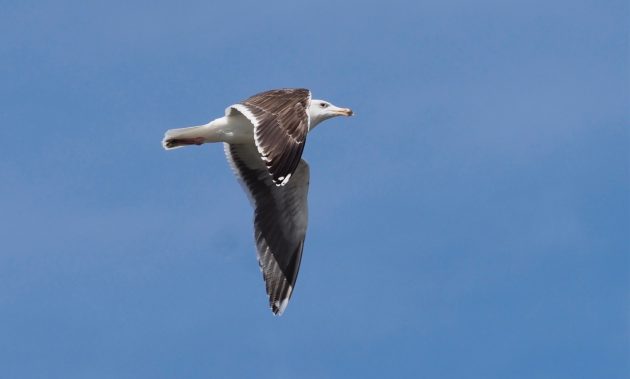
Lesser Black-backed Gulls are a daily fly-over species all year, but they never land in the garden
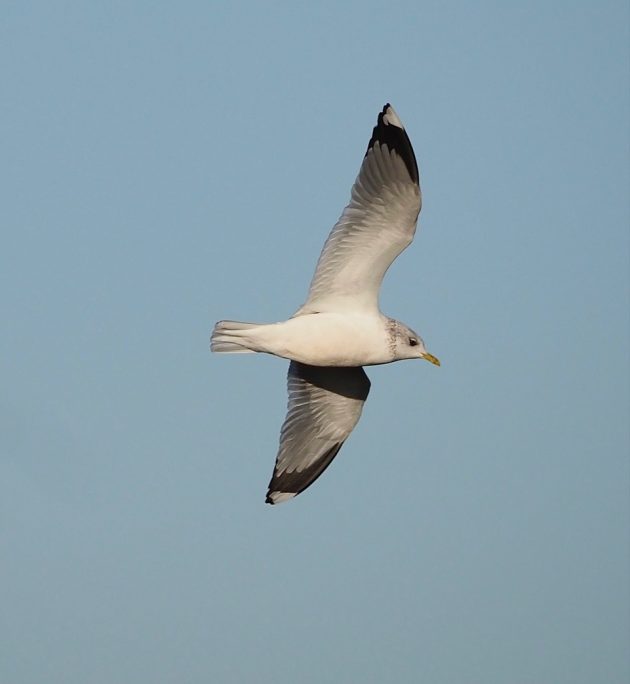
Common Gulls are the scarcest of the four species of gulls that fly over the garden. Most of my sightings are in late winter
Lesser Black-backed Gulls I see flying over daily, but they’re another species which is unlikely to ever land. The fact that they are so common here, nearly 50 miles from the coast, would surprise ornithologists from the past. Claud Ticehurst noted in his History of the Birds of Suffolk (1932) that “inland a few pass over on both migrations”, but it was a rare bird, and one that was seldom seen in the winter, even on the coast. Black-headed Gulls are also seen throughout the year, but are at their most common in winter and early spring. The scarcest of the gulls here is the Common (Mew) Gull, which is most numerous in late winter.
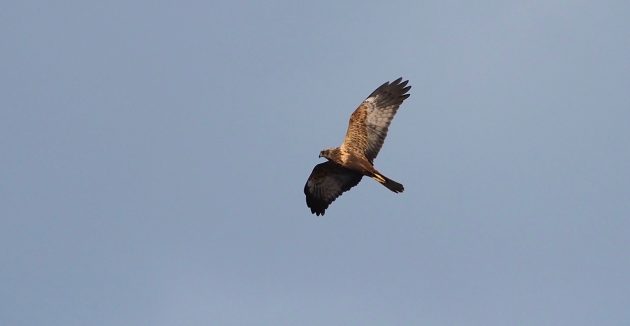
Marsh Harriers nest locally, so fly over frequently in the spring and summer
Raptors are chiefly fly-over birds. In spring and summer I see Marsh Harriers regularly, as they now nest on my local fen just half a mile away. Buzzards are always around, Peregrines less so, though I record them annually. I see hunting Hobbies occasionally in the summer, but both Sparrowhawks and Kestrels are common, and they will hunt in the garden. On one occasion my neighbour photographed a Kestrel that had killed a Wood Pigeon on my drive. Kestrels are chiefly killers of small mammals, so a woodie is unusual prey. The Sparrowhawks take anything they can grab. If it’s small enough they will carry it away, but larger prey (such as the juvenile Wood Pigeon in the photograph below) they will pluck and eat on the spot.
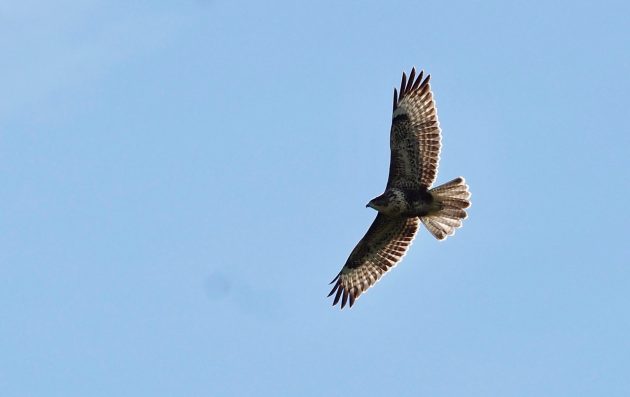
Buzzards can be seen on most days of the year
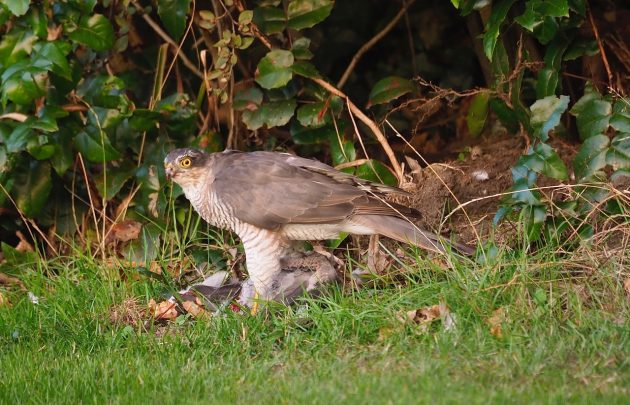
This Sparrowhawk was photographed from my study window. It had killed a Wood Pigeon
Swifts are another species that will never land in my garden, thought the nearest nesting pair is a short distance away on the high street. In mid July, when numbers peak, as many as 40 or 50 can be seen overhead. Swallows are regular throughout the summer, while House Martins can be seen daily from late July through to September, but are scarce in the spring.
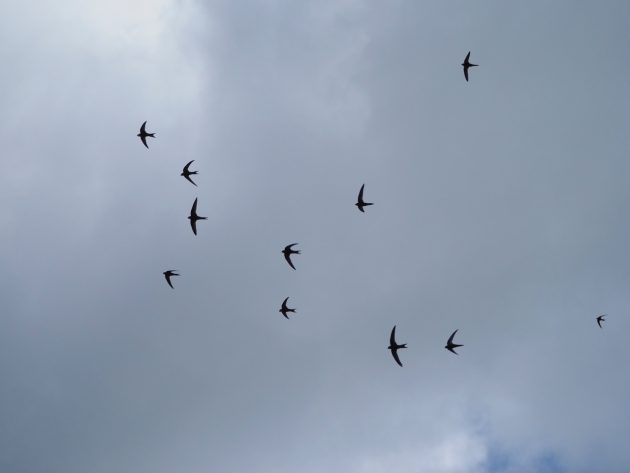
Swift numbers peak in mid July, when as many as 50 can be seen together. This photograph was taken from my garden in July
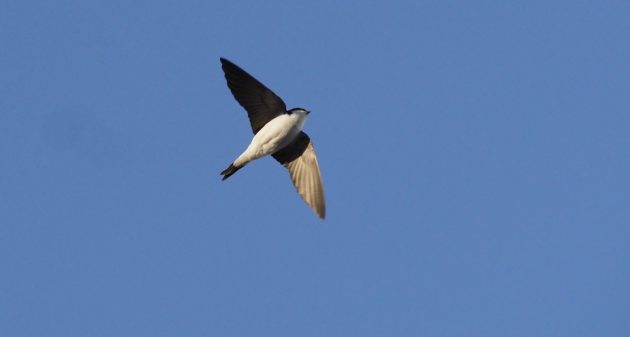
House Martins are a regular fly-over species in the summer
My house isn’t well placed for waders, but on one January day a Woodcock flew over at dusk – I wonder how often they come over unseen? Oystercatchers breed locally, so they fly over regularly in the summer, attracting attention with their distinctive piping calls, while Lapwings pass over in winter. Still missing from the list but a potential addition is Golden Plover, flocks of which do winter in the area. Wildfowl are disappointingly few, with just Mallard and Canada and Greylag Geese seen regularly, and Mute Swans occasionally.
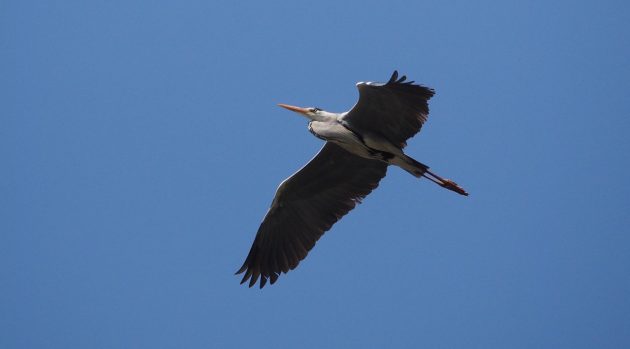
Grey Herons fly over regularly but never land – my pond doesn’t have fish!
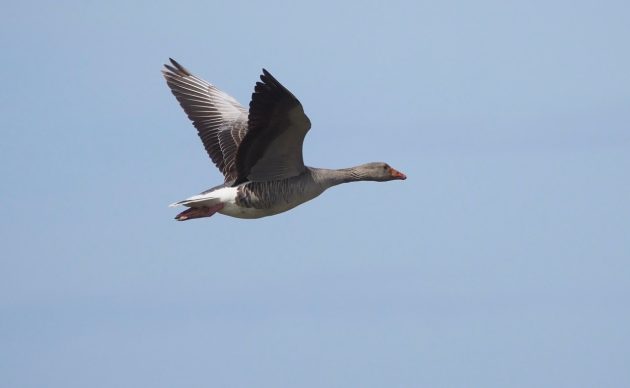
A passing Greylag Goose. A common fly-over species
In late winter and right through the spring it’s unusual to step in the garden and not hear a singing Skylark, but though they fly over regularly, the garden is too enclosed for such a bird to even consider landing. Cormorants, Grey Herons and Little Egrets also fly over, but my pond isn’t big enough to interest them.
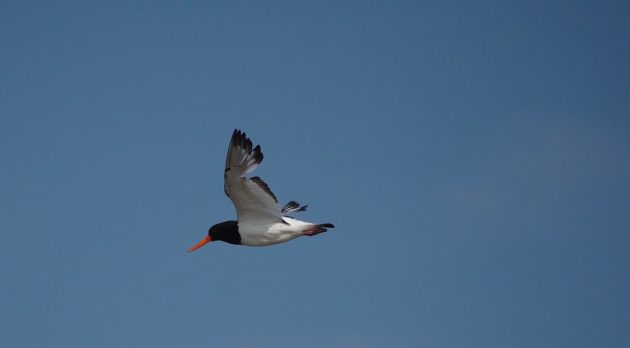
Oystercatchers nest locally, so can be seen flying over from March to July
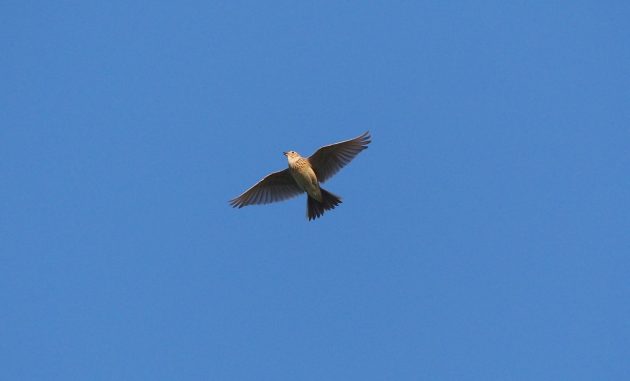
This Skylark wasn’t photographed from the garden, but flying over the adjacent barley field
It’s the birds that use the garden for feeding that are, I suppose, my real garden birds, and these I will consider next week.













I will be moving to a new patch soon, adjacent to a park. Hoping for a jump in species.
I love our condo, where I have observed 45 species. But, I still miss our former home’s backyard. There were lots of old trees and fruit trees in the neighbourhood. We weren’t far from a ravine. I would see migrants and regulars. For my club’s newsletter, I even wrote a regular column about the birds that visited and the interesting behaviours I observed in my backyard. I saw over 70 species of yard birds, counting flyovers.
I have also kept a garden list since moving into our Suffolk home in 2010. Working to similar rules as yourself I am now on 104. The latest addition was Raven.